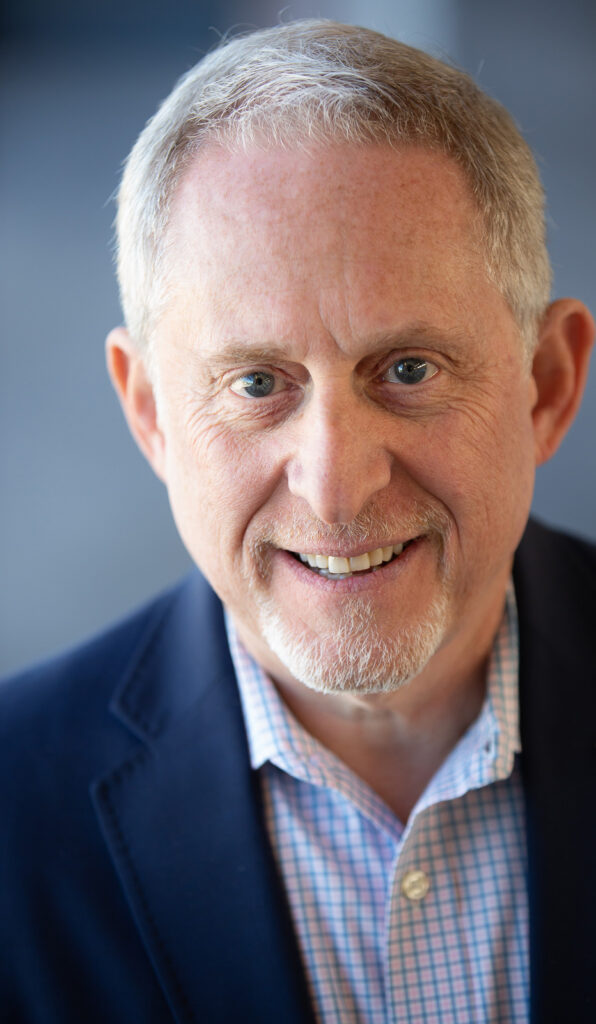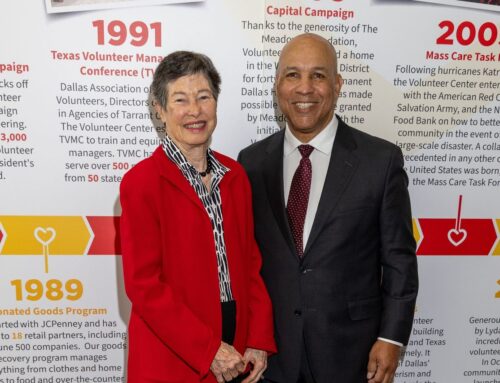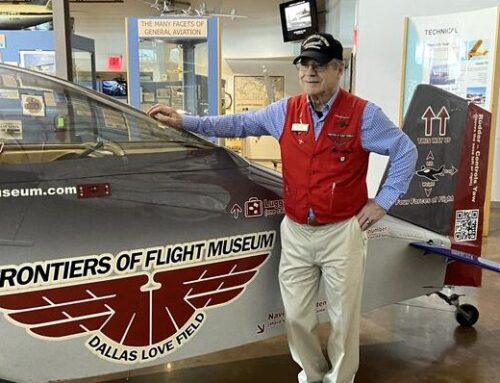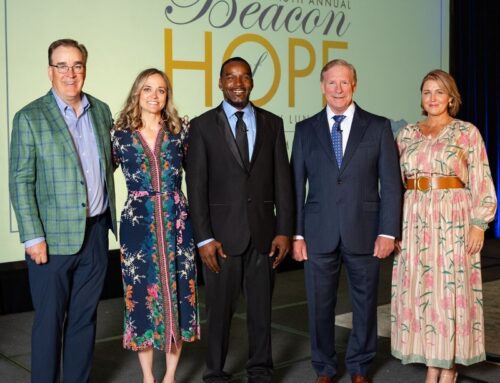
View from Virgin Galactic’s Galactic 05 mission. Photo by Alan Stern
Last year, Alan Stern went to space.
And this year, he’s doing it again.
While most business trips stay within Earth’s atmosphere, Stern and five others took the suborbital trip on Virgin Galactic’s Galactic 05 mission to do space-based research in November 2023.
“It was just a fantastic experience and very successful,” Stern says. “We had nine objectives and we accomplished all nine objectives.”
 A St. Mark’s alumnus, 66-year-old Stern is a planetary scientist and aerospace executive at the Southwest Research Institute in Colorado. He is also the principal investigator behind New Horizons, the first mission to Pluto and the Kuiper Belt. The book he wrote with NASA advisor and astrobiologist David Grinspoon, Chasing New Horizons, charts the mission’s discoveries, goals, challenges and decade-long persistence. Stern has published other research in over 320 technical papers, 50 articles, given over 500 technical talks. And counting. In 2007 and 2016, he was listed as TIME’s 100.
A St. Mark’s alumnus, 66-year-old Stern is a planetary scientist and aerospace executive at the Southwest Research Institute in Colorado. He is also the principal investigator behind New Horizons, the first mission to Pluto and the Kuiper Belt. The book he wrote with NASA advisor and astrobiologist David Grinspoon, Chasing New Horizons, charts the mission’s discoveries, goals, challenges and decade-long persistence. Stern has published other research in over 320 technical papers, 50 articles, given over 500 technical talks. And counting. In 2007 and 2016, he was listed as TIME’s 100.
His interest in space stems from the Apollo era when countries were racing toward space. Stern was drawn to the action.
“There was this science fiction feeling like the future had arrived,” Stern recalls. “I just got hooked on it by just watching this amazing development and wanted to hitch my wagon to it.”
After graduating from the University of Texas and the University of Colorado with his PhD, potential jobs were knocking at his door. After accepting the job at UT, however, he was told that it was no longer available.
“It was terrible luck,” he says.
The answer was a stopgap job in San Antonio working for Southwest Research Institute where he was promised if he worked there for a year or longer, then he could wait around until they got an opening.
So he began working at Southwest Research Institute for several years led by James Burch. They started an operation in Colorado where he’s been ever since except for a stint in Washington, D.C., working for NASA as an associate administrator for science.
He never went back to UT.
Early in his career, Stern knew he wanted to find a scientific problem that he could work on to make a real difference. Pluto’s atmosphere was a subject that few had worked on before. Stern and other scientists made an effort to get NASA to fly a mission there.
New Horizons launched in 2006 and focused on the furthest parts of space that have never before been photographed. Pluto is surrounded by the Kuiper Belt, a mecca of other scientific discoveries waiting to be found and the other leg of New Horizon’s mission.
Nine months after they launched, the International Astronomical Union (IAU) voted Pluto as a dwarf planet, claiming that it did not meet all of the qualifications to be considered a full-sized planet since it hasn’t “cleared its neighboring region of objects.”
Stern rejected the notion, pointing out the irregularity of a vote on a scientific matter, arguing against the accuracy of the definition itself and refusing to recognize the definition within his capacity at New Horizons.
“Science is about discovering facts and paradigms from data,” Stern says. “It’s not about voting.”
Other scientists, like Stern, saw Pluto as a planet with available data. And New Horizons was not about proving the IAU wrong, it was about adding more data to an already decade-long conversation.
But they had to think smaller, less expensive and use less time.
Their checklist was engineering a lightweight spacecraft, securing funding with a budget 20% less than the Voyager project, and meeting a tight deadline of just over four years for construction and launch, compared to the typical seven.
They would have one chance for the unmanned spacecraft to fly by Pluto to take observational photos. Ten days before New Horizons was projected to fly by Pluto, its computer experienced an anomaly, which unresolved would prevent the spacecraft from taking pictures.
The team was able to get the computer working again just in time. On July 14, 2015, three billion miles from Earth, the small and “budget-friendly” spacecraft soared over Pluto and shared the first photos of the planet with the world.
“There’s so much science there that it really begs for us to go back with another even more sophisticated spacecraft that can not just fly by, go into orbit and stay there and study in much more detail with much more advanced instrumentation that we had in the 2000s,” Stern says. “It’s really broken the mold in teaching us that small planets can be active long after their formation. And until we flew to Pluto, we didn’t know that, so it’s telling us that the other planets in the Kuiper Belt that are similar in size to Pluto are very likely to have similar levels of activity and be much more worthy of exploration than we would have thought before we explored.”
New Horizons continues to break more records as it travels the Kuiper Belt’s edges for the first time, its secondary objective for the mission.
“We’re not unique, but these missions inspire kids to go into STEM careers. They don’t even end up astronomers. They end up being engineers in the tech economy,” he says. “A lot of people who were giants in tech like Jeff Bezos, Bill Gates or Elon Musk will tell you if you asked them: they all got hooked on tech by watching space missions. Space Missions are like the gateway drug to STEM careers.”
The mission was granted two extensions as it flies through the outer parts of our solar system. The current extension will keep the spacecraft going until it exits the Kuiper Belt, which is expected to occur between 2028 and 2029.
As for Stern, his next mission aims to take him to space again later this year for a different project unrelated to Pluto, as well as working on other missions like Europa Clipper, which is expected to launch in October to study Jupiter’s moon with the same name, and Lucy, on its way to a new class of asteroids called Trojans.
Another mission is under wraps but he promises it’s got a “bunch of irons in the fire.”
“We can’t tell what this baby will grow up and do,” Stern says. “That is space exploration. But it has the potential to be completely transformative in terms of our economy, our technology and our society. I like being a part of it.”






